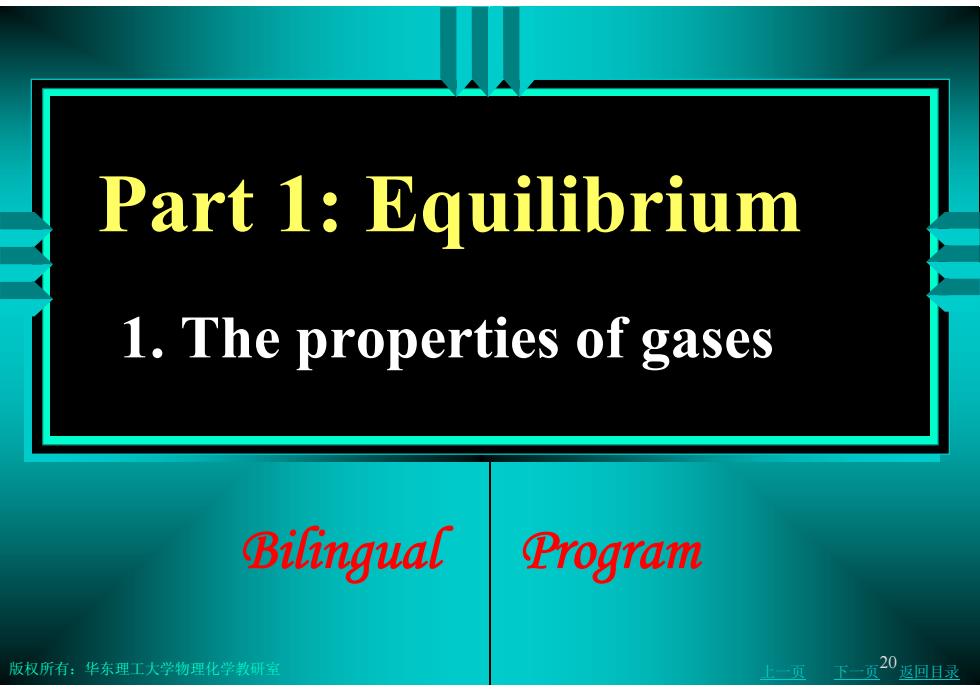
20 版权所有:华东理工大学物理化学教研室 上一页 下一页 返回目录 Part 1: Equilibrium Bilingual Program 1. The properties of gases
20 版权所有:华东理工大学物理化学教研室 上一页 下一页 返回目录 Part 1: Equilibrium Bilingual Program 1. The properties of gases
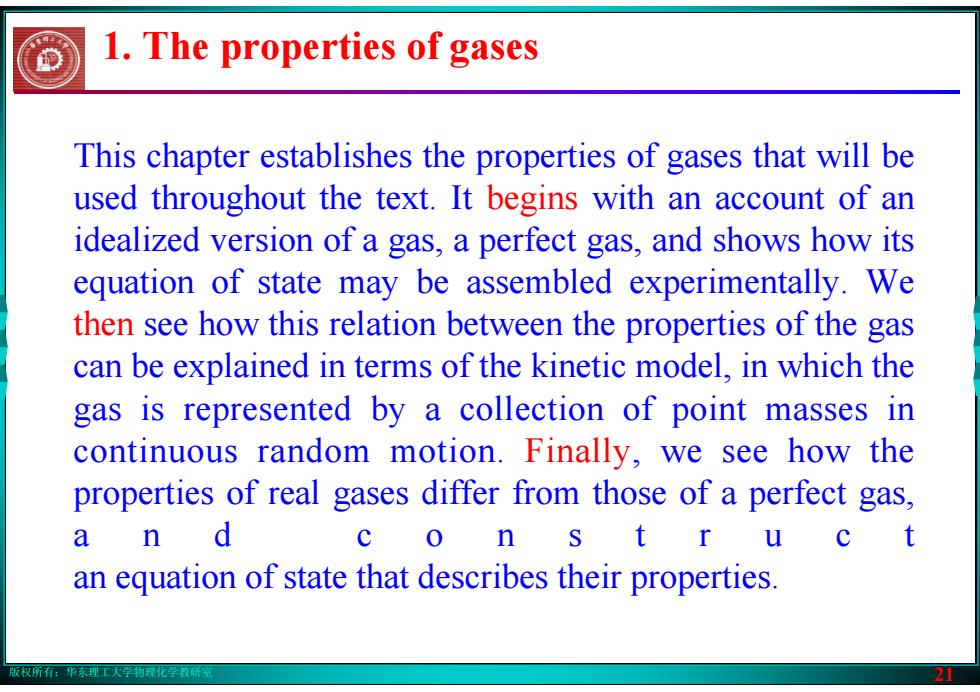
版权所有:华东理工大学物理化学教研室 21 This chapter establishes the properties of gases that will be used throughout the text. It begins with an account of an idealized version of a gas, a perfect gas, and shows how its equation of state may be assembled experimentally. We then see how this relation between the properties of the gas can be explained in terms of the kinetic model, in which the gas is represented by a collection of point masses in continuous random motion. Finally, we see how the properties of real gases differ from those of a perfect gas, a n d c o n s t r u c t an equation of state that describes their properties. 1. The properties of gases
版权所有:华东理工大学物理化学教研室 21 This chapter establishes the properties of gases that will be used throughout the text. It begins with an account of an idealized version of a gas, a perfect gas, and shows how its equation of state may be assembled experimentally. We then see how this relation between the properties of the gas can be explained in terms of the kinetic model, in which the gas is represented by a collection of point masses in continuous random motion. Finally, we see how the properties of real gases differ from those of a perfect gas, a n d c o n s t r u c t an equation of state that describes their properties. 1. The properties of gases
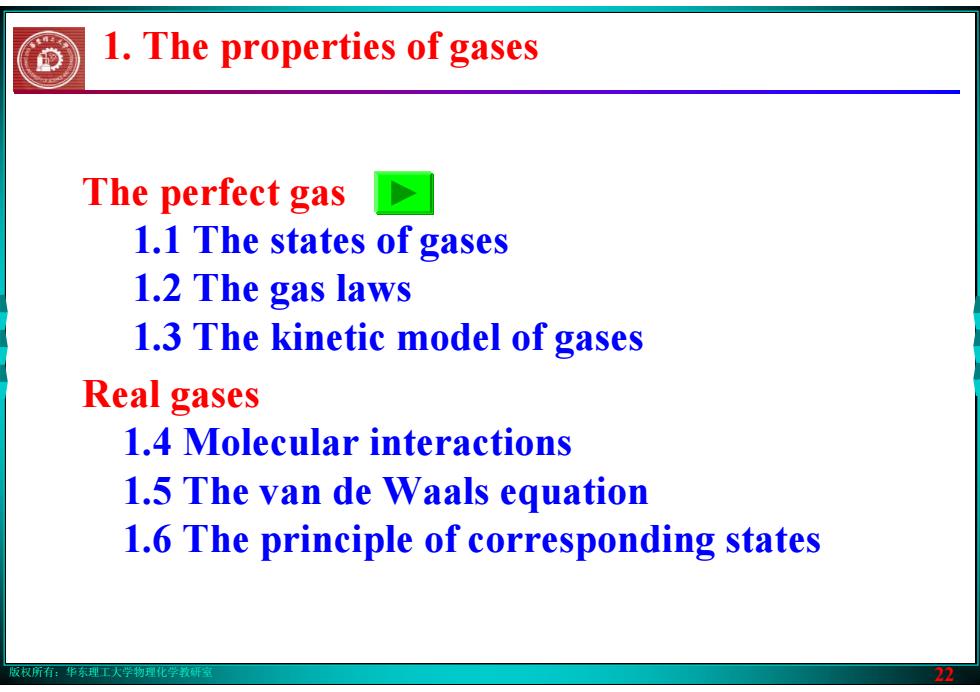
版权所有:华东理工大学物理化学教研室 22 The perfect gas 1.1 The states of gases 1.2 The gas laws 1.3 The kinetic model of gases Real gases 1.4 Molecular interactions 1.5 The van de Waals equation 1.6 The principle of corresponding states 1. The properties of gases
版权所有:华东理工大学物理化学教研室 22 The perfect gas 1.1 The states of gases 1.2 The gas laws 1.3 The kinetic model of gases Real gases 1.4 Molecular interactions 1.5 The van de Waals equation 1.6 The principle of corresponding states 1. The properties of gases
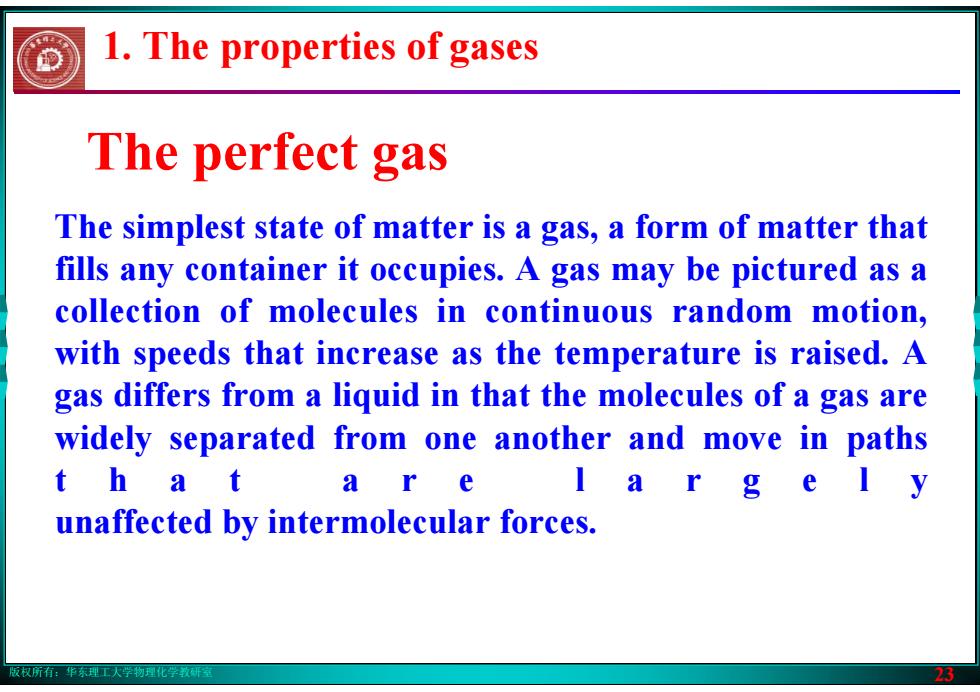
版权所有:华东理工大学物理化学教研室 23 The perfect gas The simplest state of matter is a gas, a form of matter that fills any container it occupies. A gas may be pictured as a collection of molecules in continuous random motion, with speeds that increase as the temperature is raised. A gas differs from a liquid in that the molecules of a gas are widely separated from one another and move in paths t h a t a r e l a r g e l y unaffected by intermolecular forces. 1. The properties of gases
版权所有:华东理工大学物理化学教研室 23 The perfect gas The simplest state of matter is a gas, a form of matter that fills any container it occupies. A gas may be pictured as a collection of molecules in continuous random motion, with speeds that increase as the temperature is raised. A gas differs from a liquid in that the molecules of a gas are widely separated from one another and move in paths t h a t a r e l a r g e l y unaffected by intermolecular forces. 1. The properties of gases
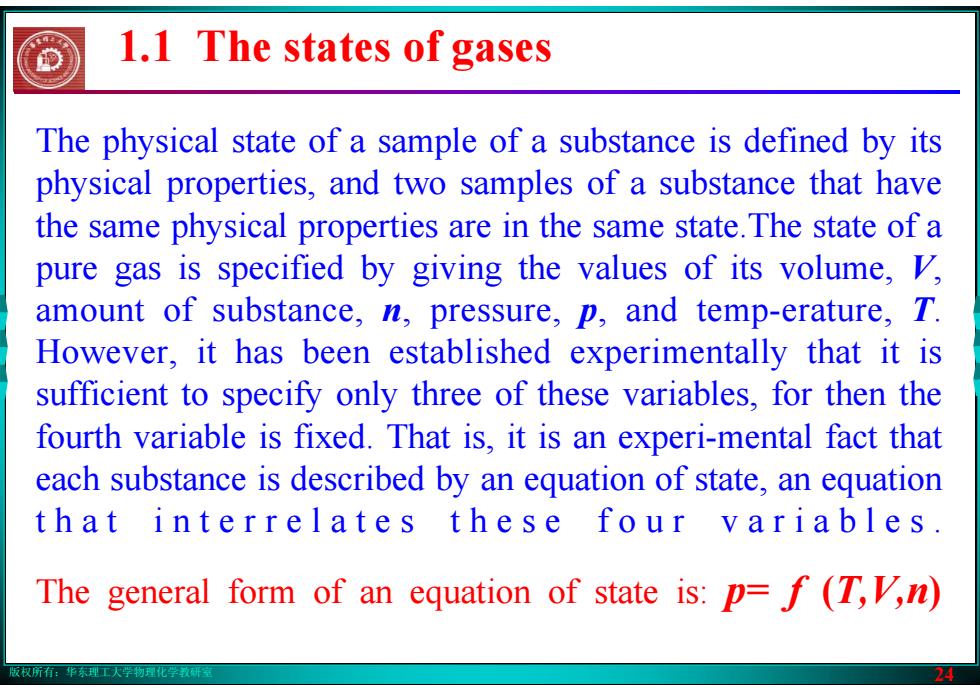
版权所有:华东理工大学物理化学教研室 24 1.1 The states of gases The physical state of a sample of a substance is defined by its physical properties, and two samples of a substance that have the same physical properties are in the same state.The state of a pure gas is specified by giving the values of its volume, V, amount of substance, n, pressure, p, and temp-erature, T. However, it has been established experimentally that it is sufficient to specify only three of these variables, for then the fourth variable is fixed. That is, it is an experi-mental fact that each substance is described by an equation of state, an equation that interrelates these four variables. The general form of an equation of state is: p= f (T,V,n)
版权所有:华东理工大学物理化学教研室 24 1.1 The states of gases The physical state of a sample of a substance is defined by its physical properties, and two samples of a substance that have the same physical properties are in the same state.The state of a pure gas is specified by giving the values of its volume, V, amount of substance, n, pressure, p, and temp-erature, T. However, it has been established experimentally that it is sufficient to specify only three of these variables, for then the fourth variable is fixed. That is, it is an experi-mental fact that each substance is described by an equation of state, an equation that interrelates these four variables. The general form of an equation of state is: p= f (T,V,n)